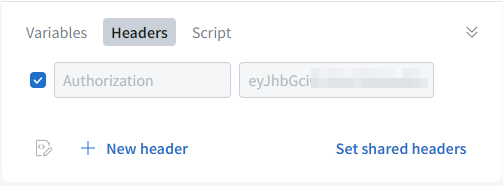Overview
Vultus provides a digital platform that analyzes satellite and weather data to help growers monitor and predict crop quality and yields.
The Vultus API is a tool for developers and provides them with the ability to integrate the Vultus services, analytics, and recommendations into their platform. As a developer, there are four basic things that you will do with the Vultus API:
- register polygons (plots of land)
- generate an analysis on a polygon
- monitor / troubleshoot an analysis request, and
- retrieve the results of an analysis (from step 2).
This tutorial will take you through all four steps, but first, let's look at the basics of GraphQL.
GraphQL
The Vultus API is built using GraphQL. GraphQL is a query language for APIs that gives developers the power to ask for exactly what they need and nothing more. Use these resources to learn more about GraphQL.
- Introduction to GraphQL - https://graphql.org/learn/
- GraphQL Best Practices - https://graphql.org/learn/best-practices/
- How to GraphQL - https://www.howtographql.com/
Mutations and Queries
You interact with a GraphQL API using mutations and queries. A mutation is a type of operation that allows you to create, update, or delete data on the server. Mutations are used to modify data in the backend, while queries are used to request data from the backend.
In this tutorial, we will use these mutations and queries.
generatePolygon()processPlantHealth()processWaterStress()retrievePlantHealth()retrieveWaterStress()
The tutorial will not go into detail about these items. Please use the internal documentation available in the Schema tab to find out more about them.
Before proceeding with the tutorial please make sure your authorization token is set in the HTTP HEADERS of the API Playground.
API Playground
The API Playground is a place for developers to access the Vultus API without the need for writing code. The playground can be accessed here: https://api.vultus.se/graphql.
The first launch of the API Playground will look something like this.

Explorer
The Explorer displays the components and internal documentation of the queries and mutations available in the Vultus API. You can also use the Explorer to help you build a query or mutation.

Schema
The API is fully documented within the API Playground. Use the Schema tab to view and explore this documentation.
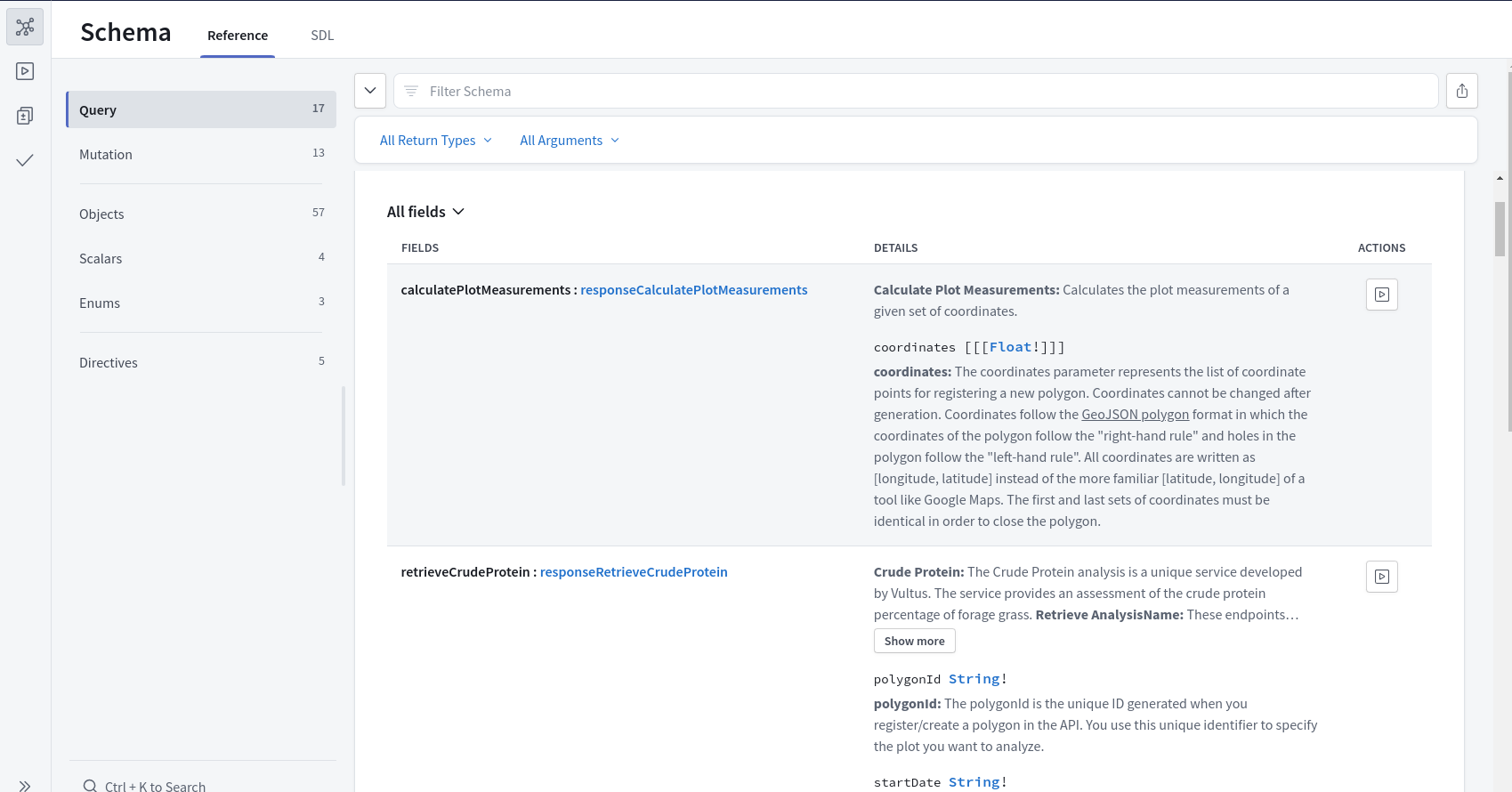
HTTP Headers
This is where you add parameters to your HTTP headers.
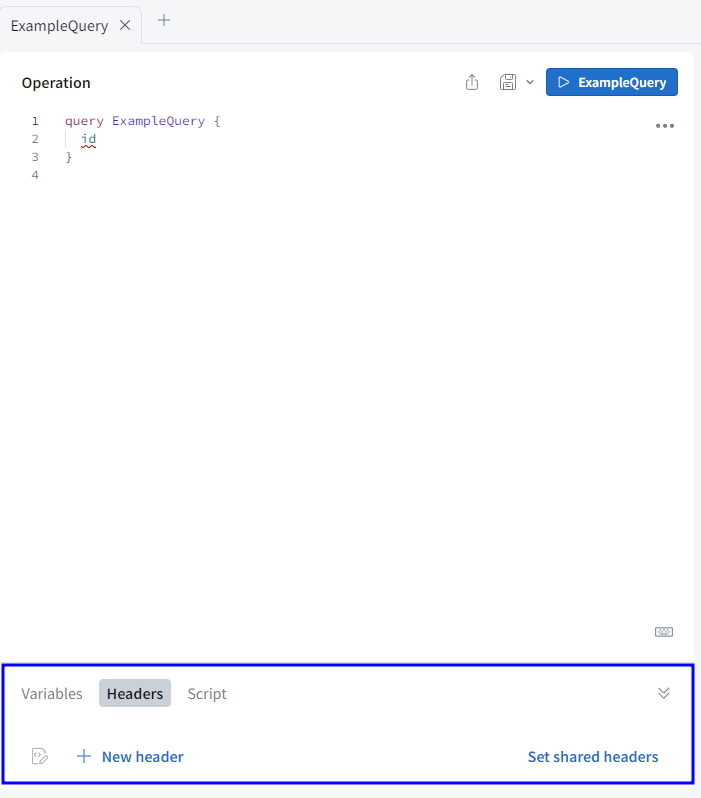
Authentication
The Vultus API authentication makes use of an access token. The token is generated by Vultus and distributed to developers via secure, private notes. Please contact support@vultus.se to request a token if you do not have one, or if your existing token is no longer working.
This token is the verification of your connection to the Vultus API and grants you access to the API. It is also used to measure your consumption of Vultus services. Please keep the token secure and do not share it outside your organization.
To add your token, click on the "+ New Header" button to open the dialog box as shown.
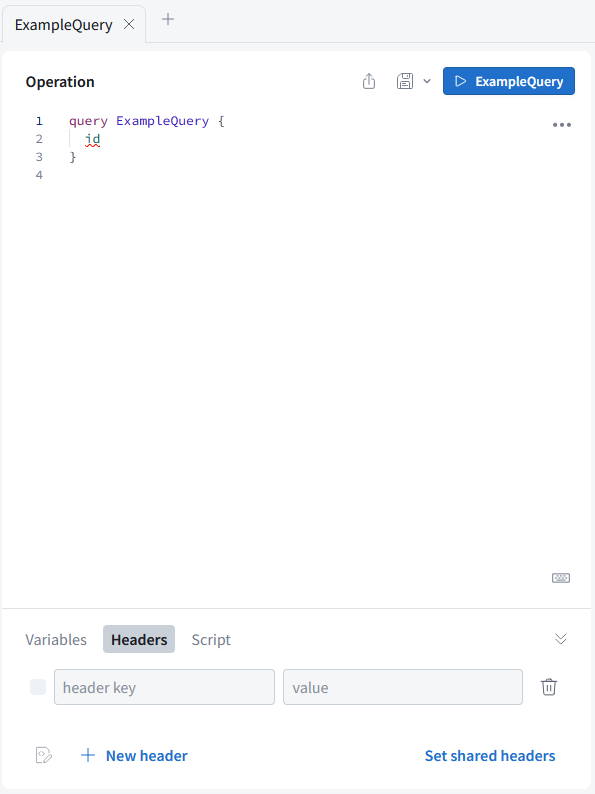
Click in the "header key" field and select Authorization.
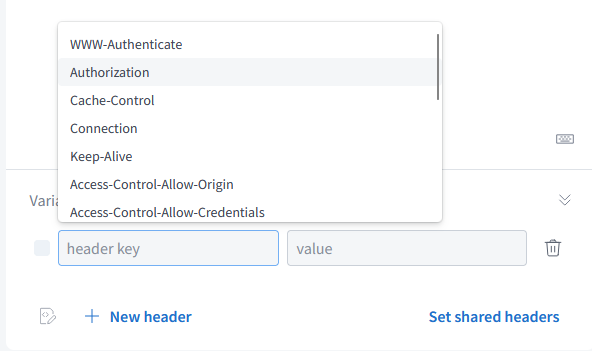
The in the "value" field paste in your token. When finished, the screen should look something like this.
